My last post left off with us making last-minute plans to rent a car from Seville and use it to visit Cordoba, then get to the ferry port in Algeciras. I was really happy that this new plan would allow us to have a relaxing morning and then go up in La Giralda (the cathedral tower) when it opened at 11. We were also looking forward to taking more pictures of the inside of Seville Cathedral at a time when it was open to tourists, not for a service, and accordingly there would be no limitations on photography.
So I slept in a bit, we had a relaxing breakfast downstairs, packed up, and checked out. It was rough hearing the "unholy prices for Holy Week" price on checkout, especially since we had thought our breakfasts were included and they ended up being extra. Oh well. They kindly allowed us to put our bags behind the desk for safekeeping, and we were off to the cathedral just before 11.
When we arrived, there was a line already. We joined it reluctantly, thinking it shouldn't take too long, but then noticed that the line was for Groups Only. The line for non-groups was on the other side of the cathedral and it was absolutely huge. We haven't seen a line like that since the Vatican Museums in Rome (and those are legendary).
I immediately knew that it meant no Giralda or cathedral tour for us - we just couldn't afford to wait that long when we had Cordoba to see and then a long drive down to Algeciras. It was really sad, but we will hopefully return one day.So we headed right back to the hotel to pick up our bags and walked until we found a large enough road to have taxis. It took us longer than we expected to find one, but we eventually did, and had a nice ride to Seville's train station.
At the station we found the Europcar office without too much trouble, and then stood in there for a long, long time. It seemed ridiculously long to me, not just waiting in line but the time it took for us to get all squared away, but David said it seemed pretty normal for a rental car to him. And happily the girl behind the counter spoke the best English we'd encountered on our trip so far. Eventually, we had keys in hand and went to the parking lot to hunt for our car, and it was very cute!
It's a Seat (rhymes with Fiat, we think), a Spanish car that is also sold in the UK. All the models are named after Spanish cities and I was hoping for a Toledo, but ours was a Leon. David was happy to be driving on the right side of the road again, but as he's been driving so much in the UK, it did take some extra concentration at first! He occasionally chanted "drive on the right, drive on the right" when we pulled back onto the road, but he did a wonderful job and stayed on the correct side of the line.
The drive from Seville to Cordoba took about an hour and a half and was really enjoyable. All of our driving in Spain turned out to be, actually. David really liked the car and thought it drove and shifted very smoothly, especially compared to our poor old Saab back home, and the roads were wonderful! They were smooth and well-maintained, and the traffic was calm and orderly - again, not what we expected for hot-blooded Spain.
The one thing to watch out for if you ever happen to drive in Spain is that people enter the freeway differently than in the US or the UK: they come to a complete stop at the end of the on-ramp if any cars are coming and yield as though they're at a stop sign, and those on the freeway don't adjust their speed to let them in. This caused a little chaos at first, since David would instinctively slow down a little to let people in, they wouldn't budge, and the people behind us didn't expect our slowdown. We thought the hesitant mergers were idiots until this happened several times and we realized that's just how they do it here! We were very happy to have realized this before we did any merging ourselves, or we might have charged right out onto the freeway when other drivers would be expecting us to stop and wait!
There was some nice scenery along the way and as you can see above, we had some very diverse weather. We were really holding out hope that we would have some sunshine in Cordoba, and thankfully we did, for at least part of the time.
Cordoba
We reached Cordoba at around 1pm. It is famous for its historic old town, but it's actually a big city (about 350,000 people) with a modern new town and doesn't look that exciting when you arrive:

But with the help of our talking sat-nav gadget David brought from home, we found the historic center before too long and I got my first glimpse of the Mezquita!
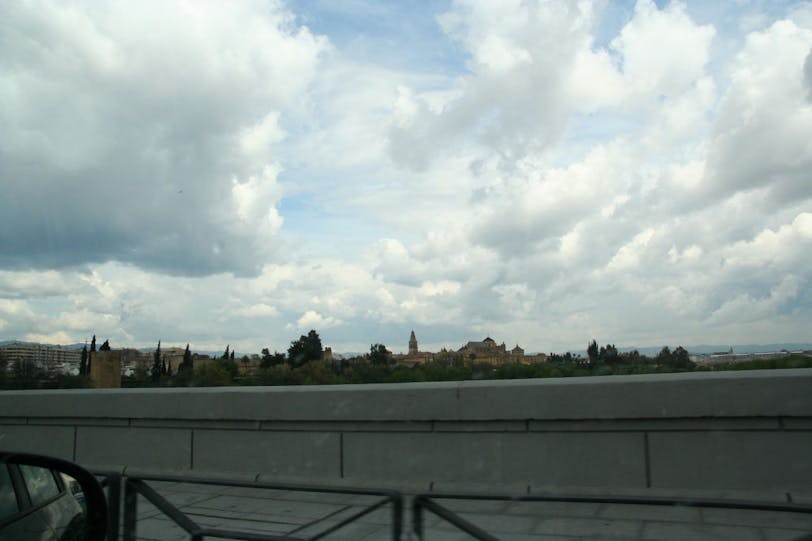
The Mezquita is a beautiful and unique mosque built in the 700s when Spain was under Islamic rule and which was later made into a cathedral. (Lots more info and photos in the next post.) David drove us right up to it to check it out, but as we expected it was not possible to park very close.

Eventually we found a spot across the river (below), on a quiet street near some hotels. That's the Mezquita in the background, but sadly the bridge that leads to it from here (which dates from Roman times) is under construction.
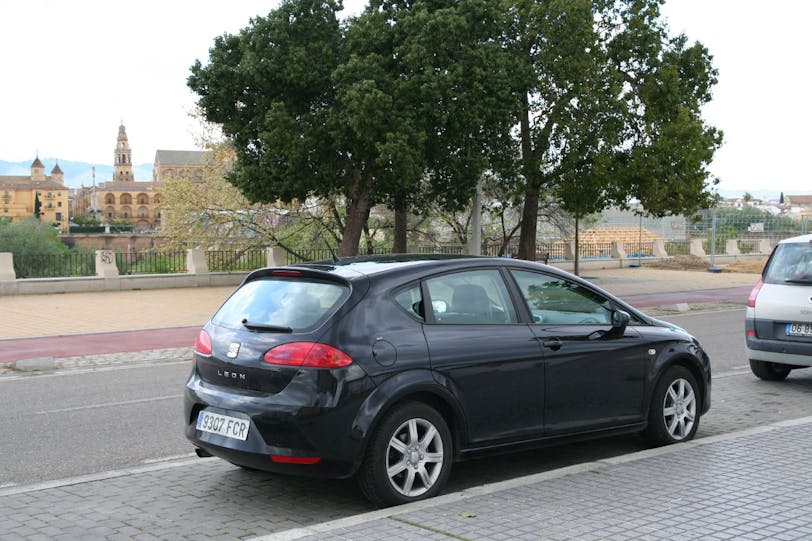
That meant we had to walk for a good 20 minutes down to the next bridge and then back down the river on the other side, and once again it was quite cold out. But the upside to this parking spot is that the hotel we parked near had some really nice bathrooms! A nice lobby, too - if we ever return to Cordoba we may just stay there. Unfortunately, neither of us can remember the name of it.
The Mezquita, our main reason for stopping in Cordoba, did not disappoint. It is the only Great Mosque built under Islamic rule in Spain that still stands today. It was built in the 700s, when the Moorish dynasty was at its height. At the time, its territory included all of Spain and North Africa and the capital was at Cordoba.
The mosque has some truly spectacular architecture and art, and thankfully the Catholic monarchs who took over in the 1200s did not tear it down like they did in Toledo and Seville. Instead, they just plunked a smaller Baroque cathedral right in the center of it.
 As you can see, the place is huge. On the north side is the Patio of Orange Trees, a wonderful feature of all Spanish mosques that provides nice shade. In the center you can see the cross-shaped roof of the Catholic cathedral, the rather incongruous addition of the 1520s.
As you can see, the place is huge. On the north side is the Patio of Orange Trees, a wonderful feature of all Spanish mosques that provides nice shade. In the center you can see the cross-shaped roof of the Catholic cathedral, the rather incongruous addition of the 1520s.
I had learned about the Mezquita to write a web article, so it was really cool for me to see it in person, and to get our own photos to add to my article! David also really enjoyed the Mezquita, since it is so different and so photogenic. Here are some of our favorite pics.


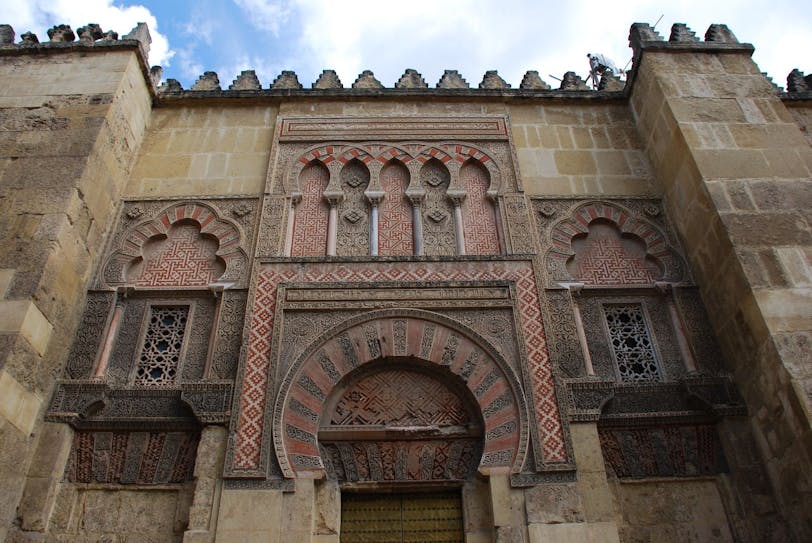

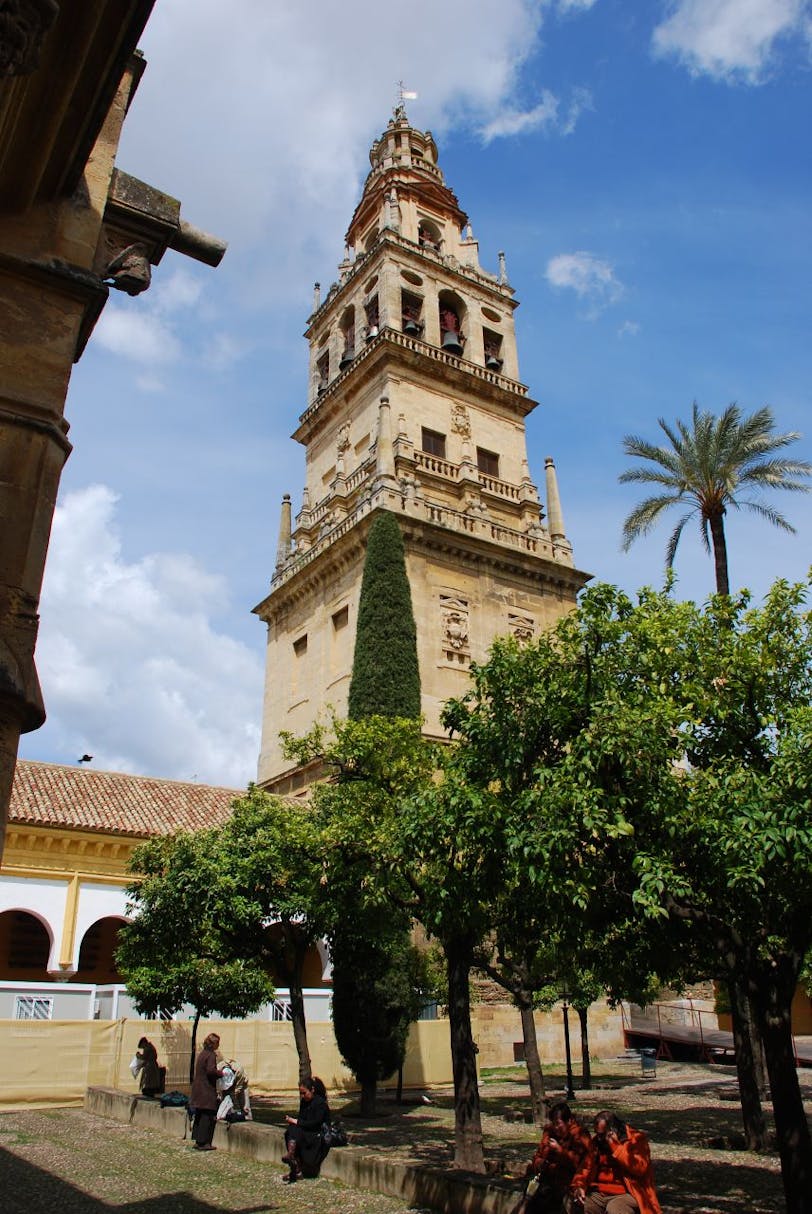

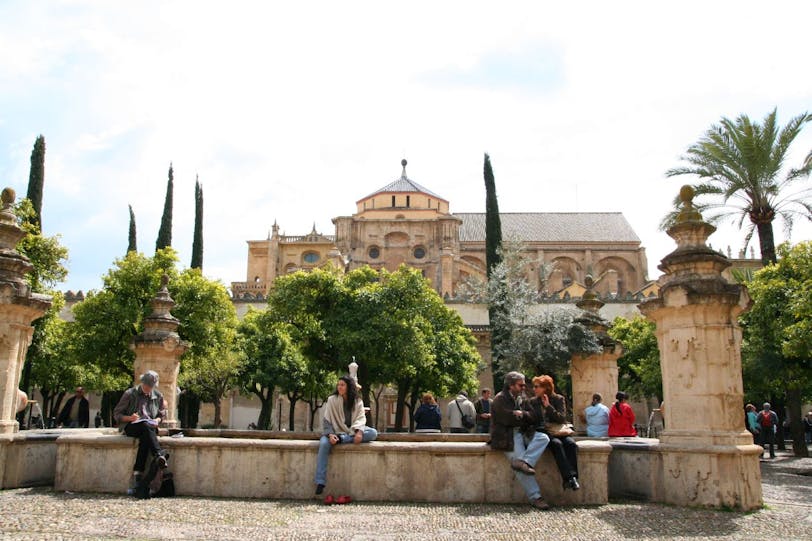



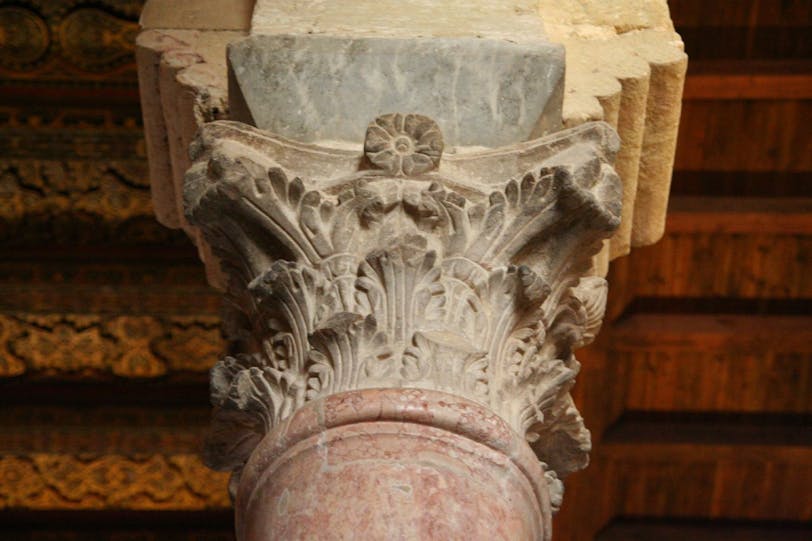





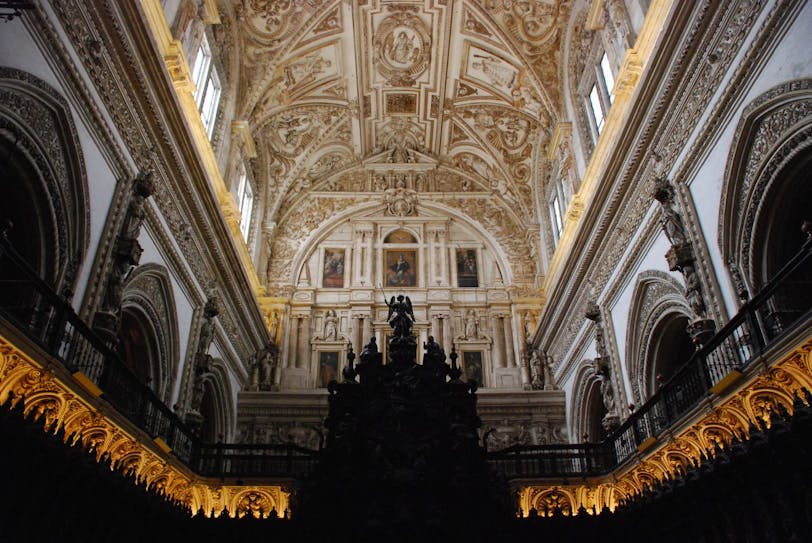

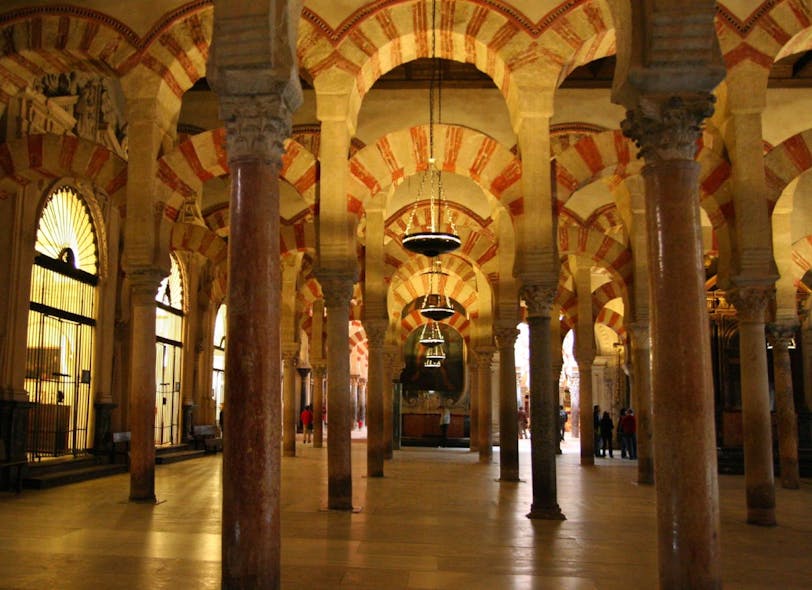
After our Mezquita visit, we followed some charming little back streets to the nearby Jewish Quarter. Cordoba is famed for having been especially tolerant when it was under Islamic rule: Jews, Christians and Muslims all lived and prospered in harmony. My guess is that it was a little less ideal than advertised, but was still far better than later Catholic rule, when Jews and Muslims were simply kicked out of the country or killed if they didn't convert.
Cordoba has a synagogue that survives from the Islamic period, which has lovely carvings and decorations. This one and the two we visited in Toledo are the only medieval synagogues left in Spain. We arrived at the same time as a German tour group, so didn't get any good general photos of the interior, but the beauty is in the details anyway:


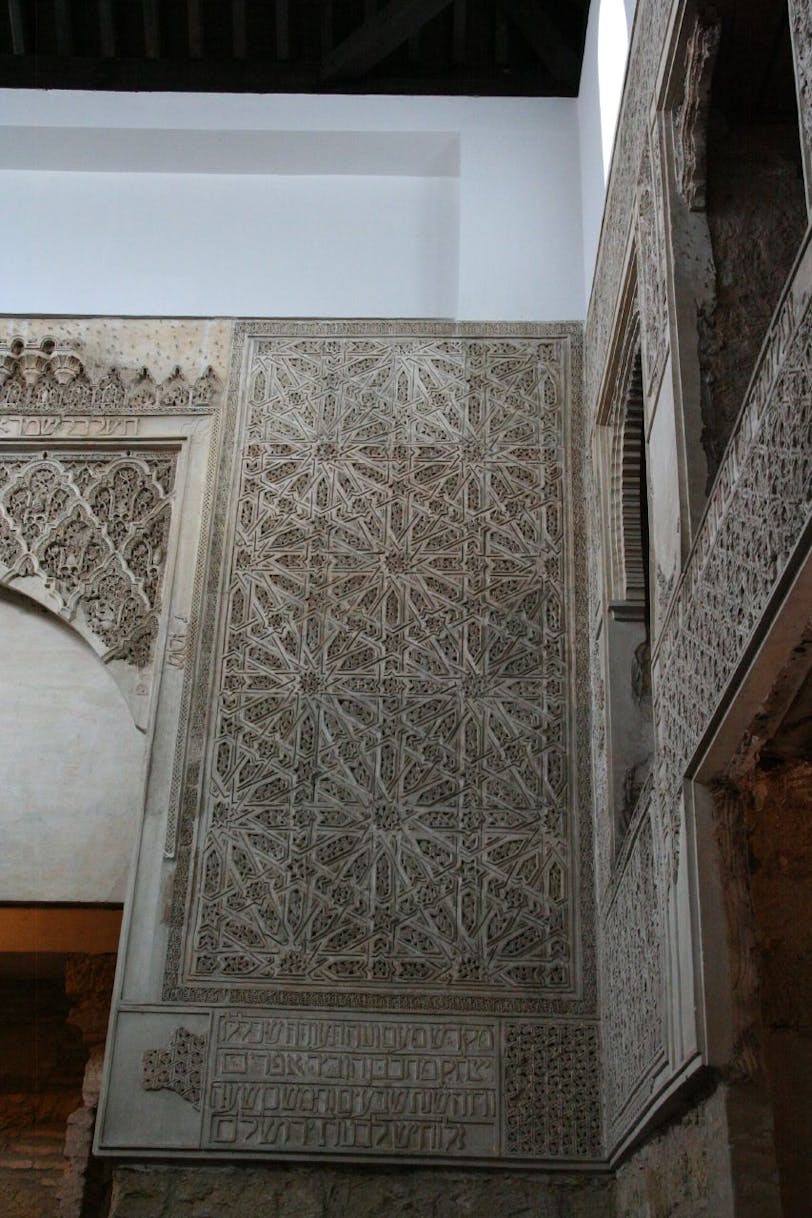


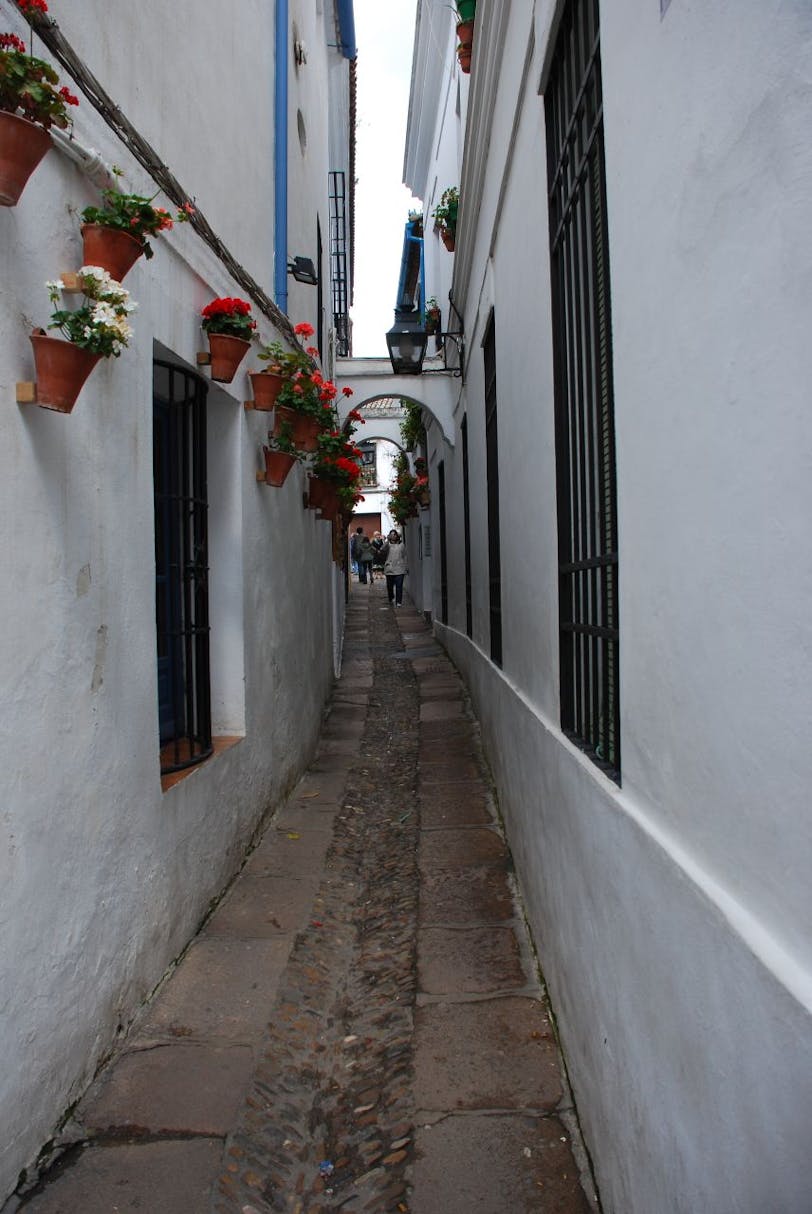
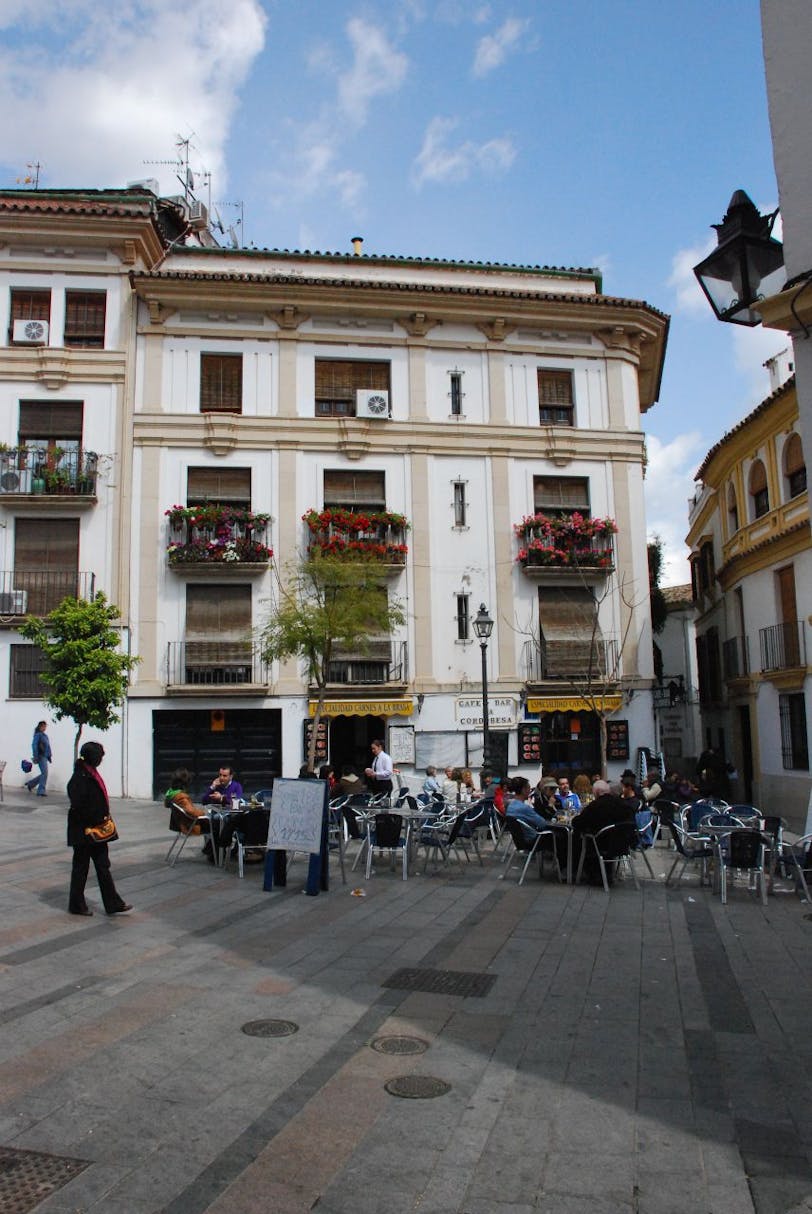

On our way back out of town, we stopped by the Alcazar (castle), which is another of the major attractions of Cordoba. Rebuilt after the Reconquista by the Catholic kings, the Alcazar is notable for its beautiful gardens, a room that hosted the Spanish Inquisition, and some Roman mosaics from the 2nd and 3rd centuries.

We were considering going inside, but were once again thwarted by a long line:

Oh, well. We had a long drive ahead of us to Algeciras so it was time to get going anyway. We made the long trek back across the river to our car and were on our way.
The Go Historic Blog documents travels to historic places, along with news and features related to history, architecture, & art.




